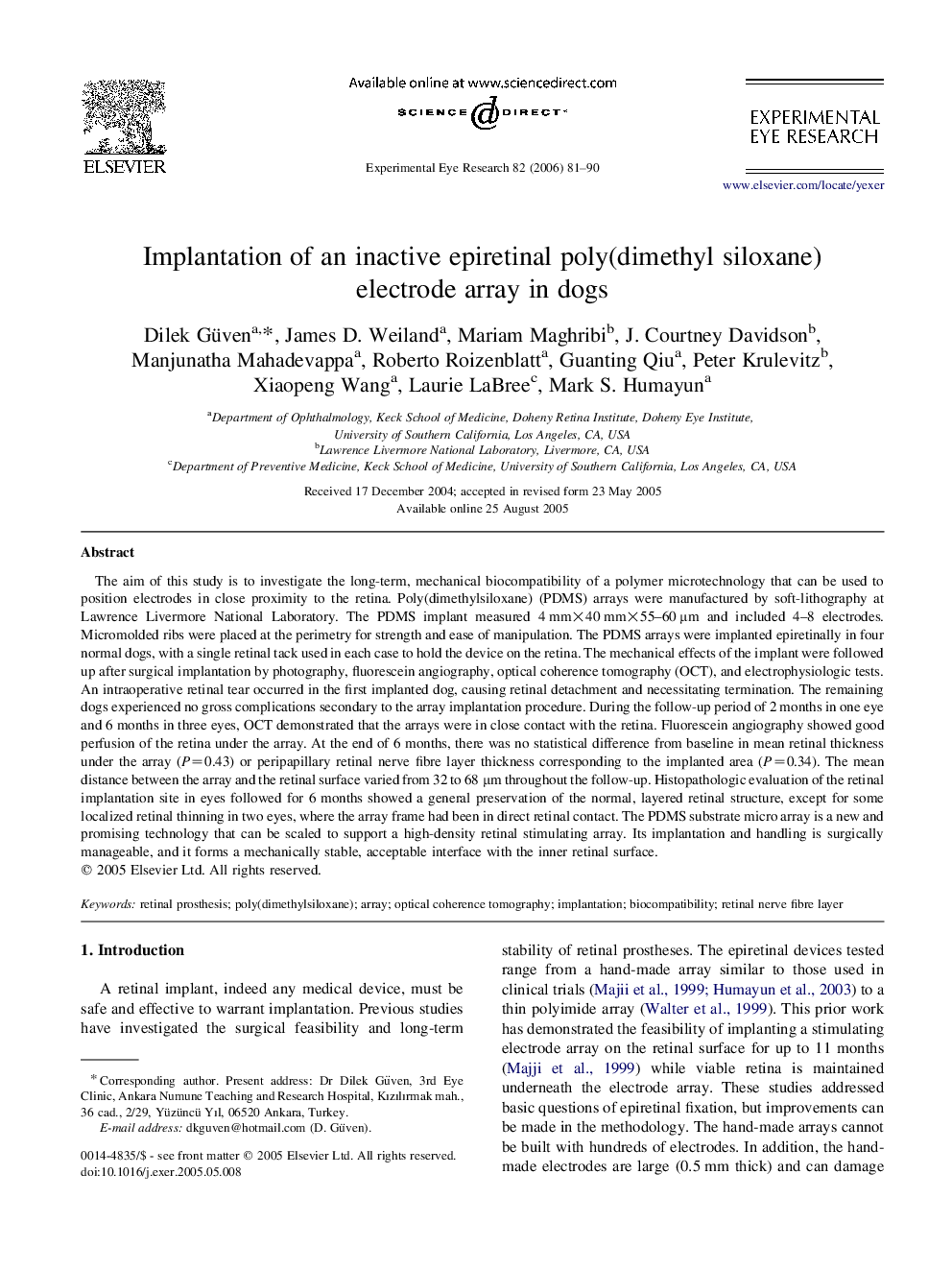| Article ID | Journal | Published Year | Pages | File Type |
|---|---|---|---|---|
| 4012745 | Experimental Eye Research | 2006 | 10 Pages |
The aim of this study is to investigate the long-term, mechanical biocompatibility of a polymer microtechnology that can be used to position electrodes in close proximity to the retina. Poly(dimethylsiloxane) (PDMS) arrays were manufactured by soft-lithography at Lawrence Livermore National Laboratory. The PDMS implant measured 4 mm×40 mm×55–60 μm and included 4–8 electrodes. Micromolded ribs were placed at the perimetry for strength and ease of manipulation. The PDMS arrays were implanted epiretinally in four normal dogs, with a single retinal tack used in each case to hold the device on the retina. The mechanical effects of the implant were followed up after surgical implantation by photography, fluorescein angiography, optical coherence tomography (OCT), and electrophysiologic tests. An intraoperative retinal tear occurred in the first implanted dog, causing retinal detachment and necessitating termination. The remaining dogs experienced no gross complications secondary to the array implantation procedure. During the follow-up period of 2 months in one eye and 6 months in three eyes, OCT demonstrated that the arrays were in close contact with the retina. Fluorescein angiography showed good perfusion of the retina under the array. At the end of 6 months, there was no statistical difference from baseline in mean retinal thickness under the array (P=0.43) or peripapillary retinal nerve fibre layer thickness corresponding to the implanted area (P=0.34). The mean distance between the array and the retinal surface varied from 32 to 68 μm throughout the follow-up. Histopathologic evaluation of the retinal implantation site in eyes followed for 6 months showed a general preservation of the normal, layered retinal structure, except for some localized retinal thinning in two eyes, where the array frame had been in direct retinal contact. The PDMS substrate micro array is a new and promising technology that can be scaled to support a high-density retinal stimulating array. Its implantation and handling is surgically manageable, and it forms a mechanically stable, acceptable interface with the inner retinal surface.
